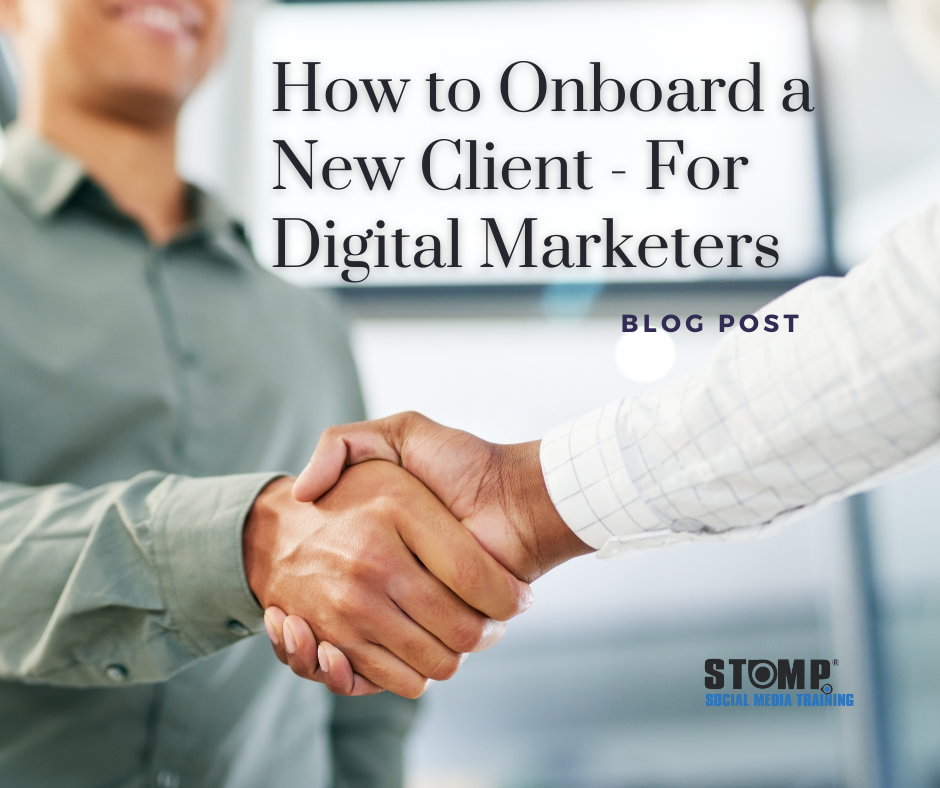
By delivering a consistent and effective onboarding experience for each client, you’re making sure that their needs are met, your information is current and thorough, and both of you are on the same page with what to expect from one another. Over the last couple of years I have noticed that blogs with lists tend to get and shared more, so you will notice my content has deviated that way. I hope you find this useful.
Whether you're freelancing, running a small agency, or just starting out in digital marketing, one of the most important parts of working with clients is getting the onboarding process right.
Why? Because onboarding correctly sets the tone. It helps both you and the client feel clear, confident and organised from the very beginning. A poor onboarding process can lead to delays, misinformation and muddled expectations, endless emails, and – worst of all – a possible bad relationship.
If you’re starting out and want to start well, this blog walks you through a clear, practical way to onboard a digital marketing client, even if you AND they are on a tight budget. I’ll cover what you need from your client, what they should expect from you, and which tools and resources will make your life easier.
Let’s begin:
Before anything is signed, both sides need to be clear on:
Even if a potential client is keen to get going straightaway, take the time to have a proper discovery call or questionnaire. I use an onboarding form I have created for this very job – free and easy. Ask them about their business, goals, current platforms, and previous marketing efforts. Make it easy for them, but also make sure you're gathering the right information to tailor your service.
Once you're both clear, send a proposal that outlines:
You can create a simple, professional-looking proposal in Canva or Notion. If you want to go a step further, tools like Bonsai or PandaDoc (I have no experience with either of these, but they seem pretty popular online) offer templates and signing tools (though many have free trials or low-cost options).
Follow this with a contract – even if you’re just starting out. It protects both of you. In Ireland, you're legally safer using templates that reference consumer law, GDPR and invoicing regulations.
Check out:
Even a signed PDF of your proposal and terms (make sure to add these and keep them up to date) via Adobe Fill & Sign or SmallPDF is better than nothing.
Once the contract is signed and the invoice is paid (yes, paid - I don’t start work without an initial payment of a month in advance), it’s time to officially kick off.
If it’s a big project, a Zoom call or perhaps meeting them in person helps iron out any important details, and always follow up Zoom calls and phone calls with an email that same day to outline what was discussed for both of you. If it’s a smaller project, a detailed email will be sufficient.
In this first communication, I always include:
To avoid delays, here’s what you’ll need from your client early on – ideally in week one:
You’d be surprised how many businesses don’t have these things organised, so be patient and be on hand to guide and advise. You may find some clients prefer to send information to you via WhatsApp or even through tools like Asana a time management tool.
If needed, you may want to use a tool like Loom or Screenpal to record quick explainer videos showing them how to add me as a user to toolslike Facebook Business Suite – it saves time for everyone.
Here’s what I give them in return:
If you’re delivering reports or content plans, you can do this via shared Google Docs, Notion, or through a paid platform like Agorapulse or Metricool or simple PDFs created in Canva. By keeping things simple, clear, and accessible, there’s no frustrated phone calls and everyone feels able to partake in the conversation.
You don’t need to sign up for every new tool. Here’s what I use (or recommend) to keep onboarding simple and low-cost:
If you want to sharpen your process, here are a few resources worth checking out:
You could also create your own onboarding templates using Canva and save them for reuse. A simple email or Google Doc checklist will do at first – the key is being consistent.
Onboarding doesn’t have to be complicated, but it does have to be clear. The smoother your process, the quicker you can get stuck into the actual work – and the more confident your client will feel working with you.
Take the time to set expectations, gather what you need, and communicate well in those first few weeks. It makes all the difference.
And remember, onboarding is a two-way street. If your client is responsive and helpful from day one, great. If not, it’s a good early sign that boundaries might need reinforcing. You are allowed to fire a client!
If you need any help with your onboarding proves, please let me know and we can have a chat.